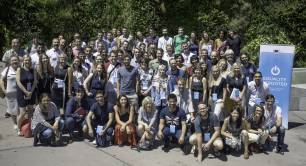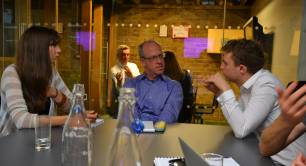How digital social innovation is re-engaging people with politics
Digital social innovation has given European citizens the opportunity to positively influence the way their communities work, writes Peter Baeck, head of collaborative economy research at Nesta.
Imagine you had an idea to improve your community. Now, imagine you could propose that idea directly to someone in government and that, with enough support from your fellow citizens, it could get funding and become a reality.
What would our cities look like if people from all walks of life could propose, debate and vote on decisions to improve the places where they live?
While concepts like participatory budgeting have been around for several decades, digital tools are offering new ways for citizens to shape their communities and cities. For example, in Paris, after 21,000 people voted for an idea to develop 41 vertical garden projects across the city, Mayor Anne Hidalgo committed €2m to the projects.
In Madrid, projects originally put forward by citizens – ranging from electricity-generating paving to municipal foodbanks for the poorest in society – are being supported and funded by the city government.
Just as digital platforms are changing how we work, shop and have fun, there’s a new opportunity for communities to become a part of decision making processes and tackle social challenges. Technology is being used to mobilise the crowd, pool resources and engage the creativity of the general public. We call this phenomenon Digital Social Innovation (DSI).
Earlier this year a project, led by innovation foundation Nesta and funded by the EU, mapped the projects and organisations using DSI across Europe and found that it is particularly prevalent in cities, with London, Paris, Amsterdam, Barcelona and Berlin leading the way.
This is perhaps unsurprising given the density of people and assets in these areas, as well as the ever present challenges of pollution, transport, employment and community cohesion.
The majority of initiatives to date have been driven by members of the public and organisations setting up DSI projects aiming to improve their city without involving City Hall.
For example, in 2011 Casserole Club, was set up to connect those who enjoy cooking with older neighbours who aren’t always able to cook for themselves. Wheelmap, a crowdsourced map of wheelchair accessible locations, came to life earlier, in 2010.
As projects grow in size and quality, city authorities across Europe are waking up to the possibility of integrating DSI more directly into how cities are run.
In London, the Mayor’s regeneration team has set up the Crowdfund London initiative on the Spacehive platform. Whatever campaigns aiming to improve the local area manage to raise from the crowd, the mayor’s fund will match, up to £50,000.
Cities can develop a form of DSI that works for them by starting small, iterating and then gradually scaling what works. In the first two rounds of the Crowdfund London programme in 2015, the mayor pledged £600,000 towards 37 projects, with the maximum pledge being £20,000. Now, on its fourth round, the programme has increased matches to £50,000.
Where London developed a partnership with an existing DSI platform, other cities have sought to develop their own platforms.
In Paris, Mayor Anne Hidalgo has set out to give residents a more active role in developing ideas to shape the city's future. This is seen in initiatives such as the participatory budgeting scheme, ‘Madame Mayor, I have an idea’, where projects are proposed and voted on by citizens.
To nurture engagement within communities there has to be a balance between offline and online interaction. In Paris they have pursued offline workshops, groups and civil society-led activity to galvanise participation of people at a local level.
Decide Madrid, the Spanish capital’s government engagement platform, invested €200,000 in marketing to promote the 2016 participatory budgeting process. This led to over 45,000 people engaging.
Some cities have now progressed past pilots and are taking a wider more strategic approach to DSI. The most notable is Barcelona where the City Council has made DSI a priority area, including through the ‘Barcelona Digital City Strategy.’
This approach includes setting up the DSI4BCN network to coordinate efforts of local DSI initiatives and changing procurement to make it easier for smaller DSI initiatives to get public contracts. Developing partnerships with existing, local DSI communities is crucial in order to encourage engagement and make the most of the creative ideas that are springing up from grassroots organisations.
At a time of great technical advancement and increased connectivity, the focus should be on how these developments can be harnessed to drive social change and empower the public to have a say in how this is done. The groundbreaking ideas we see being trialled in cities across Europe have the potential to engage with local communities to a level we have never seen before.
Picture shows detail from 'Colour in Romford', a Crowdfund London campaign to brighten up the east London town



